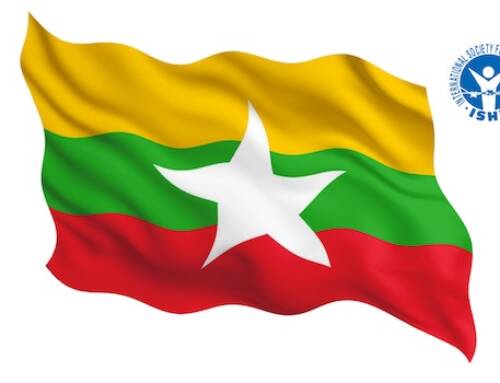Deadly War in Sudan


Rita Kahsay
In the face of the ongoing conflict in Sudan, a dire humanitarian crisis is unfolding, placing the lives of 70,000 Tigrayan refugees, among others in Gedarif, in imminent danger. These vulnerable men, women, and children, who sought refuge from the horrors of genocide in Tigray, now find themselves trapped in a perilous situation due to the escalating conflict between the Rapid Support Forces (RSF) and the Sudanese Armed Forces (SAF). Compounding their vulnerability is the absence of essential support systems, with some humanitarian organisations ceasing operations in the area, leaving these refugees without protection.
The largest refugee camp, Tenedba, is now merely 100 kilometers away from the conflict zone, intensifying the urgency of the situation. With the ongoing Ethnic cleansing of Tigrayans in Western Tigray, the refugees are not able to return home, rendering these refugees stranded in a volatile environment with limited resources and attention. The absence of medical assistance, livelihood support, and food aid for the past two months has given rise to a catastrophic humanitarian emergency.
Exasperating this dire situation is the increasing threat of human trafficking and sexual violence, worsening by the growing need to travel for accessing food and critical supplies. The absence of aid and any protection agencies has left the refugee population vulnerable to exploitation and harm.
The following Testimony is from a refugee Doctor, who has dedicated himself to serving the most vulnerable for the past 3 years.
“ I am Tedros Tefera, a refugee doctor in Sudan, one of the 70,000 Tigrayans who survived genocide in Tigray by seeking refuge in Sudan since November 2020. To enter Sudan from Tigray, people used two different entry points: one through Hamdayt, which I used, and the second through Hashaba. In total, more than 70,000 Tigrayans sought refuge in Sudan since then.
Humanitarian services and supplies were scarce at the reception camps. Consequently, refugees were relocated to permanent camps in Tenedba and Um Rakuba for their safety and to facilitate more feasible humanitarian services. Services, such as food, sanitation, shelter and medical aid, were minimal initially, resulting in children becoming malnourished and others falling ill. Some sought better services in different Sudanese towns and cities with the assistance of friends, family, or support from the Tigrayan diaspora.
Thousands of refugees moved to various parts of Sudan, while some returned home, risking their lives crossing heavily guarded borders, facing threats from traffickers, politics, and military targets. Tragically, lives were lost during these attempts.
Various local and international organizations provided services to the refugees from early 2020 onwards. MSF, ICRC, IPPF, UNFPA, Kuwaiti Fund, Muslim Aid, Norwegian Refugee Council, American Refugee Council, Alight, Health Professionals Network for Tigray, Asmelash Grant Foundation, International Society for Better Health Access, and many others were involved in providing different types of services at both reception and main refugee camps.
The clinics in these camps saw an average of 160 to 180 sick refugee patients daily. MSF, ICRC, Asmelash Grant Foundation, Health Professionals Network for Tigray, and the International Society for Better Health Access handled the highest burden. Complex cases were referred to other parts of Sudan, organized by Alight, with an average of 50 to 60 patients per month.
Local services continued with limited resources until mid-2023 when war broke out in Sudan. Most non-governmental organizations left the refugee camps, leaving behind skeleton staff with very limited medical supplies. Food rations were supplied for two months, but uncertainty loomed thereafter.
The services faced further threats after the war spread in Sudan in December 2023, reaching Madeni, nearly 100 kilometres away from the largest refugee camp in Tenedba. This led to the sudden withdrawal of UNHCR and other local refugee commissions, intensifying uncertainty about humanitarian services in the camps. Security threats have claimed the lives of 15 refugees in Khartoum and other Sudanese regions.
The 70,000 Tigrayan refugees in Sudan and the nearly 1.8 million displaced from Western Tigray had hoped to return home after the peace deal signed between the government of Tigray and Ethiopia in South Africa in October 2022. However, promises of repatriation have been delayed month after month, leaving people, particularly refugees, disheartened and stranded.
We’re not expecting the world to owe us anything, but we appeal for strengthened efforts from various commissions set by the African Union and the UN to oversee the implementation of the Pretoria peace deal. Human rights and humanitarian organizations need to assist refugees and internally displaced persons in returning home and rebuilding their lives.
I am Dr. Tedros, one of the 70,000 refugees in Sudan. I wish you a happy new year.”
In light of this imminent danger faced by these refugees, we urgently call for immediate intervention.
Swift Relocation: Ensure the immediate relocation of Gedarif’s refugees beyond Sudan’s borders to safeguard them from the escalating conflict.
Critical Aid and Services: Deliver essential aid and health services to the vulnerable refugee population, left in an unprecedented state of abandonment by humanitarian operatives. The absence of medical assistance, livelihood support, and food aid must be urgently addressed.
Conflict De-escalation: Prioritize efforts to de-escalate the conflict in Sudan, placing innocent lives at the forefront. A swift and peaceful armistice is imperative to allow respite and relief for those in desperate need.






